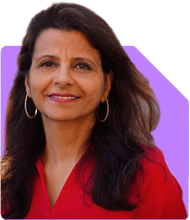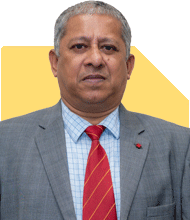Hi sir thnku in advance. I am 28M,working in central govt job. It has just been one year and I plan on retiring very early around a 35 years of age. I have nps tier 1 account due to the job. I just have one query since I don't plan on marrying and I am alone with my own home. My expenses are max 18k per month. I hardly travel and live a very frugal life. So my query if I resign at 35 years then will 50 lakhs will sustain me for 15 years keeping in mind the inflation and my return as 7% on an average.
Ans: Your question shows rare clarity at a young age. You are just 28. But you already have a defined vision to retire by 35. That is highly appreciable. Many at this age are still unsure of financial direction.
Let us now assess your question in detail.
You asked whether Rs 50 lakhs will last 15 years, post retirement at 35.
Let us evaluate your financial journey from all angles.
Understanding Your Present Situation
You work in a central government job. That offers job security. And also an NPS Tier 1 account.
You live frugally. Your monthly expense is only Rs 18,000. That is extremely disciplined.
You have your own home. So no rent or EMI outgo. This reduces your future cost burden.
You do not plan to marry. So your financial responsibilities are only for yourself.
You plan to retire at 35. That means only 7 more years of active income.
After 35, you want Rs 50 lakhs corpus to sustain you for 15 years.
That means till age 50, you want to live from this corpus.
Now let us move step-by-step to assess sustainability.
Assessing Expense Inflation Over Time
Right now, your expense is Rs 18,000 per month.
Even a frugal person cannot avoid inflation.
Prices of food, electricity, health, etc. will go up.
Inflation over 15 years cannot be ignored.
Even if inflation is modest, say 6%, your expense will rise gradually.
By year 10 or 15, your Rs 18,000 monthly expense may double.
That will need a higher withdrawal from your corpus.
So corpus sustainability depends on how inflation is planned for.
Evaluating Return Assumption
You assume 7% average return on corpus.
This is realistic if money is well invested.
You must avoid only FDs or savings accounts.
To get 7% post-tax, proper asset allocation is needed.
Mutual funds can help here.
Especially, actively managed funds with a Certified Financial Planner.
Avoid index funds. They just copy the index.
Index funds do not give downside protection in bear markets.
They also underperform during volatile sideways markets.
Index funds have no fund manager taking active decisions.
Whereas actively managed funds adapt to market cycles.
A qualified CFP can help select suitable active funds.
Regular plans through a CFP give ongoing guidance.
Direct funds may look cheaper, but lack this support.
Direct funds are like self-medication. Risky without expert view.
Regular plans have a small fee, but offer long-term peace.
Corpus Withdrawal Planning
Your Rs 50 lakh must support monthly cash flow.
Even if you start withdrawing Rs 18,000 monthly, over time it will increase.
You need a withdrawal strategy.
You can follow a staggered withdrawal.
That means only taking what is needed each year.
Rest of the money keeps earning.
It also helps reduce tax burden.
But you must track how much you withdraw each year.
And ensure it grows in line with inflation.
If not planned well, corpus may finish earlier.
So withdrawal plan should be dynamic, not fixed.
A Certified Financial Planner can help prepare such a roadmap.
Emergency and Health Preparedness
You are alone. That means no support system in emergencies.
You must keep some contingency fund aside.
At least 12 months of expenses, i.e., about Rs 2.5 lakhs.
This should be liquid. Like in sweep-in FDs or ultra-short debt funds.
Also, ensure you have a strong health insurance policy.
Healthcare cost rises faster than inflation.
Even a single surgery or hospitalisation can dent your corpus.
Do not rely on employer health cover post resignation.
Buy your own health insurance before retirement.
Choose Rs 20–30 lakh cover. Preferably with a super top-up.
Keep paying its premium from a separate health corpus if needed.
If you stay healthy and insurance unused, that is a blessing.
But if not, it will safeguard your financial independence.
Psychological Readiness for Early Retirement
Financial numbers are only part of the journey.
Are you ready for non-financial changes post-retirement?
How will you keep yourself engaged from age 35 to 50?
No daily job, no team, no deadlines. That may feel strange.
Mental health and social belonging are also essential.
Plan for what you will do post retirement.
Hobbies, part-time work, teaching, or creative work.
Something that gives meaning to your day.
Else early retirement may feel empty after some years.
Personal fulfilment is important, not just financial planning.
Tax Implication of Your Investments
Returns from equity mutual funds have a new rule.
Long-term capital gain (LTCG) above Rs 1.25 lakh taxed at 12.5%.
Short-term gains (STCG) are taxed at 20%.
This affects how you redeem funds.
Withdraw strategically to reduce tax.
Do not withdraw large amounts in one go unless needed.
Spread withdrawals over financial years.
Plan investments so equity and debt are balanced.
This helps with tax and market stability.
NPS Tier 1 – How It Helps
You already have NPS Tier 1 account.
You can continue it even after quitting job.
But withdrawals are restricted before age 60.
You can withdraw only 20% before 60 if not annuitised.
So it may not be useful for your 35–50 needs.
But it can be your backup after 60.
So continue it. Don’t touch now.
Let it grow. It adds to your retirement safety.
It cannot be your main retirement plan for early years.
How You Should Build Rs 50 Lakh Corpus
You have 7 years left to save.
That is a short horizon for such a big goal.
You must save aggressively now.
Keep lifestyle minimal, as you already are doing.
Avoid unnecessary gadgets, dining, or gadgets.
Every rupee saved now compounds for your future.
Invest in a well-planned mutual fund portfolio.
Include large cap, mid cap, and flexi cap funds.
Avoid thematic or sectoral funds. Too risky for main corpus.
Also add short-duration debt funds for stability.
Review this plan once a year with your CFP.
Increase SIPs with each salary hike.
Also allocate your yearly bonus fully into investments.
Rs 50 lakh target is tough but possible with discipline.
Asset Allocation Approach
Corpus should not be 100% in equity or 100% in debt.
A balanced approach is better.
Early years of retirement can bear some equity.
Later years should gradually shift to debt.
This is called glide path strategy.
Helps avoid sequence of returns risk.
If market crashes in year 1 or 2, your corpus shrinks fast.
So first 3 years’ expenses should be in debt.
Remaining in equity-debt mix as per risk profile.
Rebalancing is important each year.
Do not ignore this step.
It controls risk and improves return consistency.
Finally
Rs 50 lakhs can last for 15 years if:
You invest it wisely.
Withdraw in a disciplined way.
Factor in inflation, taxes, and health cost.
Keep emergency corpus aside.
Stay insured for health and critical illness.
Engage yourself meaningfully post-retirement.
Review your plan annually with a Certified Financial Planner.
Early retirement is not a one-time plan.
It is a living strategy that needs updates.
You are on the right path.
Stay focused. Stay simple.
And always seek guidance when needed.
Best Regards,
K. Ramalingam, MBA, CFP,
Chief Financial Planner,
www.holisticinvestment.in
https://www.youtube.com/@HolisticInvestment






























